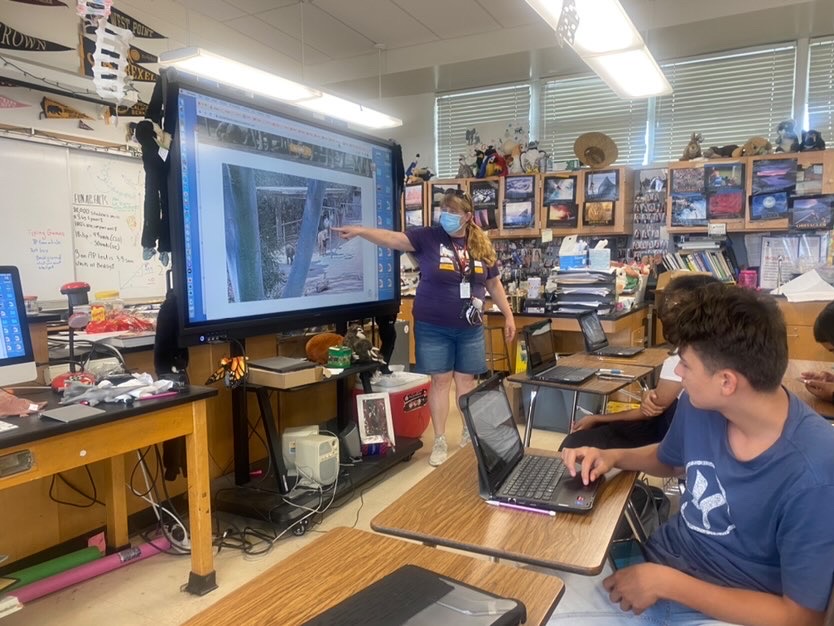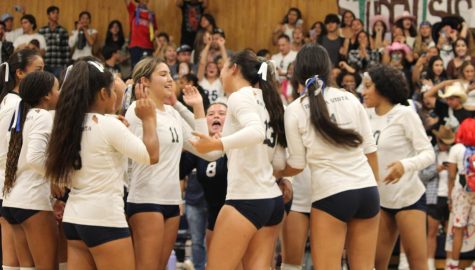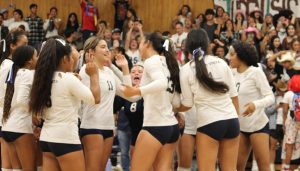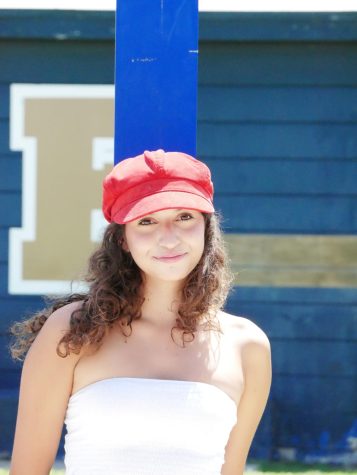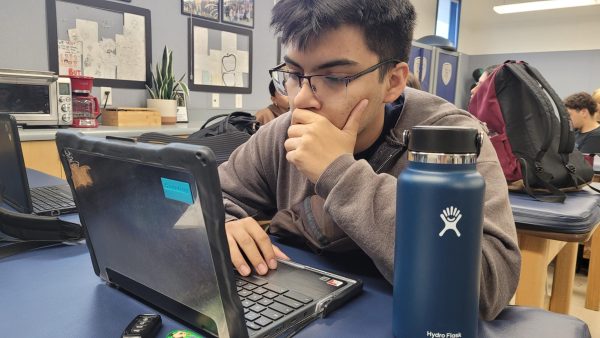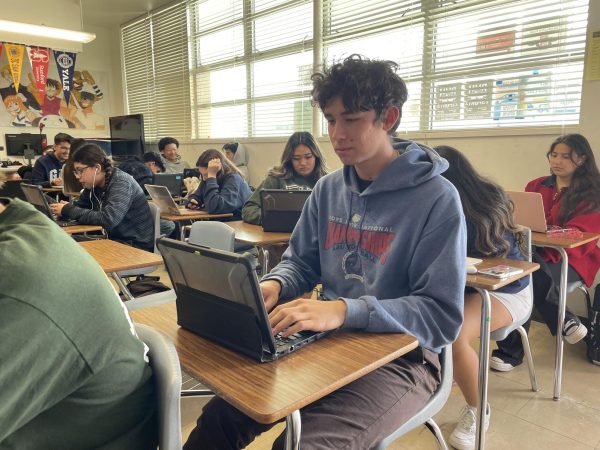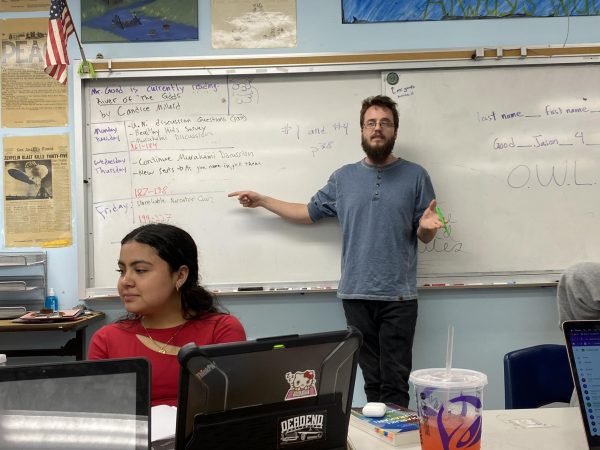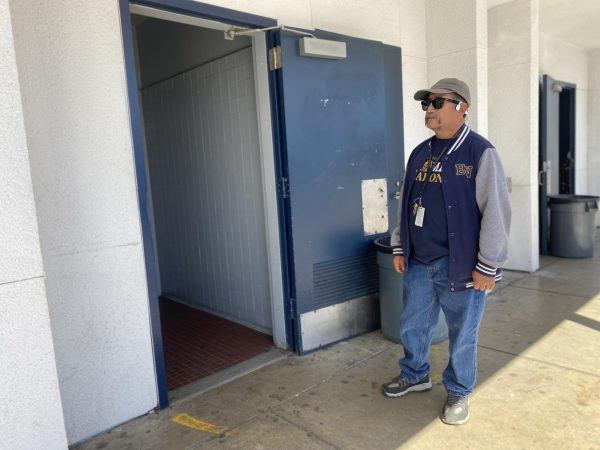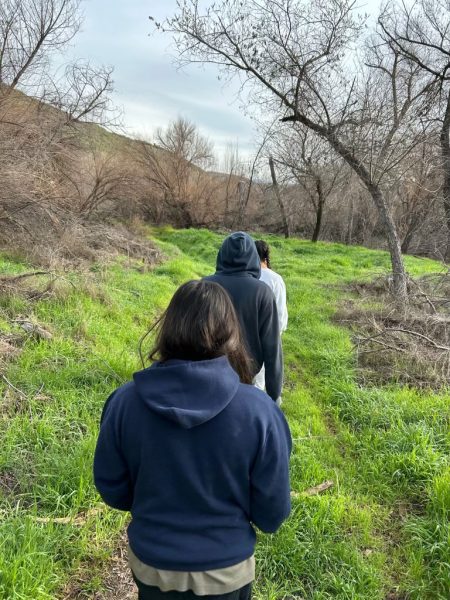A researchers guide to becoming a highschool teacher
BVH Biology teacher shares her professional career choices and where they’ve led her
Biology teacher Dr. Michelle Mardahl and her fifth period AP biology class observe elephant behavior at the San Diego Zoo through a live feed.
October 24, 2022
From Anaheim, California, Dr. Michelle Mardahl had an eventful journey to get to where she currently is as a teacher at Bonita Vista High (BVH). Mardahl came to San Diego to pursue her masters degree in biology at San Diego State University (SDSU) after completing her undergraduate education at California State University Fullerton and claims she never quite had this career option in mind. She has taught at BVH for 20 years now as an Accelerated Biology, AP Biology, IB Biology and Regular Biology teacher and has grown a deep love and appreciation for both the school and her students.
“She [Dr. Mardahl] has an abundance of energy and you can really tell she loves teaching,” senior Makayla Veglia, a previous AP Biology student, said.
Students like Vegila had the privilege of absorbing Mardahls’ abundance of energy and were positively affected by her as a teacher. This positive effect Mardhal has on students motivates her and is why she pursued a career in education. When Mardahl started her search for universities she had major decisions to make as a highschool student, considering both the costs and commute time.
“I paid for every single dime of my education, I worked hard at all of them. I got into UCI [University of California Irvine] school for undergrad. And [it was hard] because of the money difference, it was so much more money and the traffic was bad. If I were to go to UCI, it would be 40 minutes in traffic every day,” Mardahl said.
I feel like I get to have relationships, mentorships and you really just get attached. My students are my kids. I just want the best for [them]. — Dr. Michelle Mardahl
Though UCI was not the perfect fit for Mardahl, her quest for a university did not stop there. Fortunately, she found an alternative that fit her lifestyle; California State University, Fullerton.
“Cal State Fullerton happened to be 15 minutes from my house, so I rode my bike. I liked Cal State Fullerton because it had smaller biology classes. I knew all my professors, they knew me by name. Instead of being in a class of 300 people, I was in a class of 34 new people. That was better for my learning style,” Mardahl said.
After graduating from Cal State Fullerton, Mardahl moved on to earn her master’s degree in biology at San Diego State University and finally pursued her PhD at University of California San Diego (UCSD) where she worked at the medical school there.
“I also worked at the Scripps Research Institute and published my work in Journal of Cell Biology and some others,” Mardahl said.
Mardahl dedicated a lot of her time, passion and patience to her education throughout her pre-teacher years. However, the real turning point in her career to become a teacher came by surprise.
“I was working at Scripps and someone asked me, ‘Will you teach this class for Southwestern College? It’s at night.’ ‘When?’ ‘Next week.’ ‘Okay, I’ll do it.’ So I started teaching at night as an adjunct professor for biology 100 and it was life-changing,” Mardahl recalled.
Mardahl also revealed that she had previous experiences as a teacher. She started learning how to teach as early as grad school where she was an assistant.
“I always taught as a grad student. I taught labs, as a teachers assistant (TA). I liked having students that I trained how to do molecular biology,” Mardahl said.
Although she had taught as a teachers assistant, she became a lot more serious with her work as an adjunct professor at Southwestern College (SWC). To her surprise she started to get more opportunities to teach elsewhere during her time at SWC.
“And then San Diego State said, ‘This one professor is on kidney dialysis, can you please take human genetics? This job escalated very quickly. I did eight different college classes,” Mardahl said.
Mardahl realized that it was a lot to handle, and it was just then that she was presented with an opportunity at BVH. She came to BVH as an intern in 2003 with her Ph.D but was told to go back to school and get her teaching credentials.
“I was teaching at night, biology 100 (at SWC) and teaching AP/IB bio (BVH), I found that I had both the college students and the high school kids at the same time. I liked the high school kids better because I could actually fix people and make an improvement,” Mardahl said.
Mardahl believes it was difficult to teach at the community college because of many factors influencing the attendance and dropout rates of the students. These factors include when her students lose a job or are unprepared and unwilling to get help. In contrast, she feels highschool students could be guided more easily.
“I feel like I get to have relationships, mentorships and you really just get attached. My students are my kids. I just want the best for [them],” Mardahl said.
Mardahl was able to form more meaningful relationships with classes of 34 students rather than 300 students, showing how much she cares about sharing knowledge and connecting to students one on one.
“She uses phrases and songs which really help me memorize concepts, she also uses a lot of visuals and allows us to have a lot of hands-on learning,” senior Vera Osuji, a former Accelerated Biology and AP biology student, said.
Mardahls’ past students have been positively influenced by her and her unique teaching strategies and techniques they’ve learned.
“She focuses a lot on how to do well on the FRQs which helped me pass the AP exam in junior year,” Osuji said.
An outlet that Mardahl uses to cope with her own issues raised while teaching, and issues that students will face in the world, is the use of dark humor in her classrooms. She features various humorous posters along her walls, bringing about a sense of community and closeness. This learned balance in the classroom, which can only be attained with experience, is what allowed her to become such a well-rounded teacher throughout the years.
“By having friends and teaching in BVH, we help each other through tough times,” Mardahl said.
Dr. Mardahl describes her biggest accomplishment as a teacher in a very heartfelt way.
“My biggest [accomplishment is] just seeing my students succeed in whatever they want to do. There’s quite a few of them (her past students) that are in medical school, a few of them have gotten PhDs. I’m proud of everyone. If everybody has the tools to succeed in what they want to do, then that means I’m a part of that,” Mardahl said.
Not only has Mardahl been excellent inside the classroom but she also has a great sense of responsibility to the community and the world. She contributes to the community through her Saving the Lives Of Threatened Species (S.L.O.T.H.S) club, raising over $6,000 for endangered species.
“I feel privileged to work with students. I worked as a researcher, on an electron microscope that costs you half a million dollars. I worked with a decomposition microscope. I had some really cool toys to play with,” Mardhal said. “And yes, it’s frustrating when your internet doesn’t work here, but I don’t mind all these frustrations because I get to be with the students. I have a special place in my heart for Bonita. I think the students are special.

